class: center, middle, inverse, title-slide # Time-aligned transcriptions with ELAN ### Bradley McDonnell ### 2020/10/08 (updated: 2020-10-08) --- --- # Goals 1. Navigate ELAN files 2. Produce/edit annotations in ELAN 3. Create/edit tiers in ELAN 4. Conceptualize/annotate your own recordings  --- # What is a time-aligned transcript? 1. Time-aligned transcriptions match: - sections of text **(ANNOTATIONS)** to - pieces of audio and/or video recordings **(MEDIA)** --- # What is a time-aligned transcript? 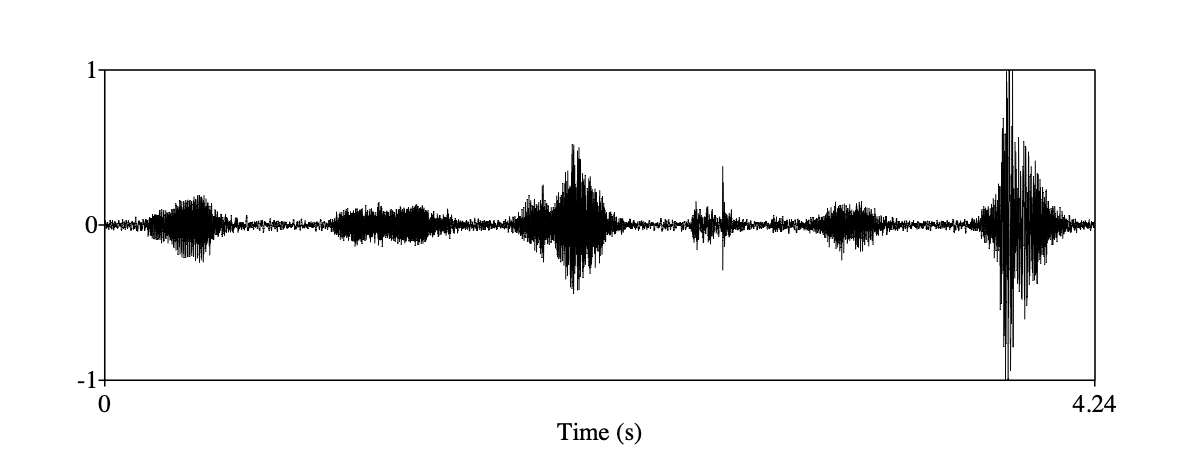 .pull-left[ |<!-- --> |<!-- --> | |:-------------|:---------------| | **Jack:** | Hola. | | **Kristen:** | Hey! | | **Jack:** | How's it going?| | **Jake:** | Good. || ] .pull-right[ <audio controls> <source src="audio/waveform-audio-1.wav" type="audio/wav"> </audio> ] --- # What are some common time-aligned transcriptions? -- 1. closed captioning 2. subtitles 3. ... --- # Why bother? 1. **Your language resources will be much richer!** Your resources ... * are searchable * are verifiable * reinforce your language as a living language * match orthography to pronunciation * allow for the creation of other resources * ... --- # what is ELAN? ### ELAN is a tool for producing time-aligned transcripts of audiovisual recordings. * Developed & maintained by the Max Planck Institute for Psycholinguistics in Nijmegen. * ELAN stands for **E**UDICO **L**inguistic **An**notator. * EUDICO stands for the **Eu**ropean **Di**stributed **Co**rpus Project. * It is developed alongside a number of other software tools that work in concert with ELAN (i.e., Arbil for metadata & Lexus for lexical databases). --- # Why use ELAN? ### ELAN uses non-proprietary, standards-compliant output. * It uses **unicode** so that your fonts display correctly. * It uses **XML** so that your document is long-lasting and archive ready. It conforms to well documented XML schema and is human eyeball-readable. * ELAN documents can be exported to a wide range of useful products for a wide range of audiences. * ELAN can be exported as a subtitled video for communities. * ELAN can also be exported to Praat, FLEx, Subtitled text, etc. for linguists. --- # How is ELAN better than a printed transcript? * There are many uses for printed transcripts. * In the past, the printed transcript was considered the primary source: * Whatever the printed transcript could not capture was not included in the discussion. * An accompanying recording was just considered to be an added bonus. * In ELAN the text \& the recording are **unified** * This opens up a number of possibilities for research & learning. * The printed transcript is one of the many possible exports in ELAN. --- # Some foundational concepts To use ELAN effectively, you must understand: 1. Your own goals for the structure of your transcript. 2. ELAN's built in concepts about different kinds of annotations. 3. How your goals maps onto ELAN's concepts. With this in mind, let's ask ourselves: > What kind of information do I want in my time-aligned transcript? **Let's consider what we see in some printed transcripts...** --- # Transcript: Single language w/ one speaker [((JAY-Z Fresh Air Interview))](http://www.npr.org/2010/11/16/131334322/the-fresh-air-interview-jay-z-decoded) > "Well I had a - I grew up in the Marcy Projects in Brooklyn, and my mom and pop had an extensive record collection. So Michael Jackson and Stevie Wonder, and all those sounds and souls - and Motown etc., etc. - filled the house. So I was very familiar with the song when Kanye bought me the sample. It was just such an interesting and fresh take on it that I immediately was drawn to it." -- **Simple transcription system** --- # Transcript: Single language w/ multiple speakers * Prosodic phrasing * Speaker overlap * Pause length * Laughter & other non-language oral noises * Phrase accent/stress **The following example is in the UCSB Discourse Transcription system, which we'll be learning next month** --- # Transcript: Single language w/ multiple speakers .pull-left[ <img src="img/TwoSpeaker.png" width="300px"/> ] .pull-right[ <audio controls> <source src="audio/TwoSpeaker.mp3" type="audio/mp3"> </audio> ] <!-- 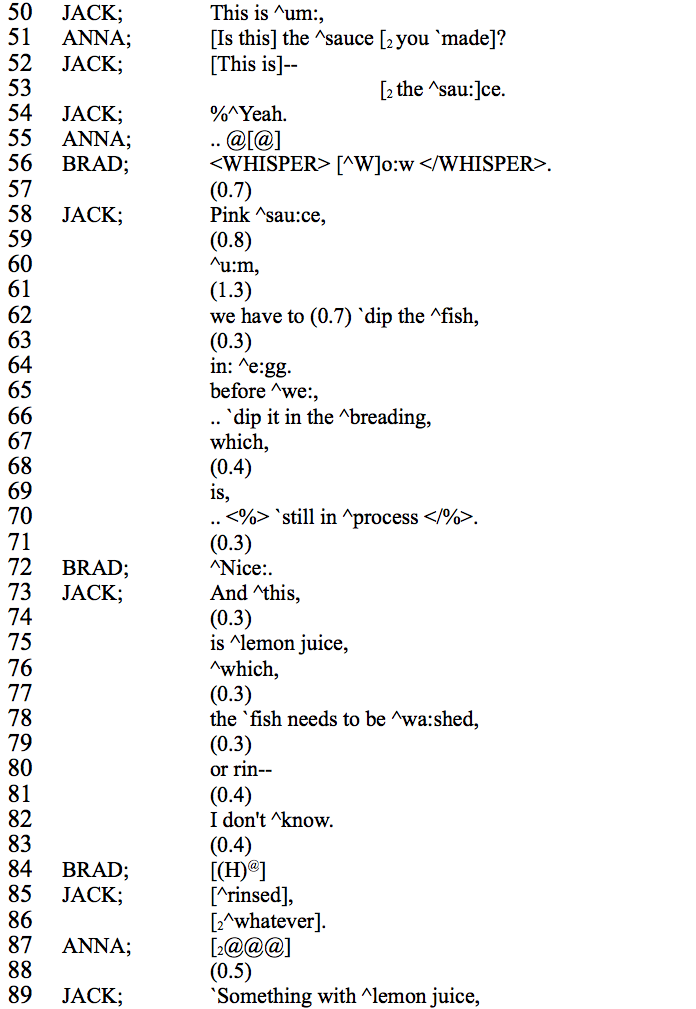{width=600px height=200px} --> --- # Transcript: Two languages w/ single speakers ((Polygamous Marriage, Shona)) 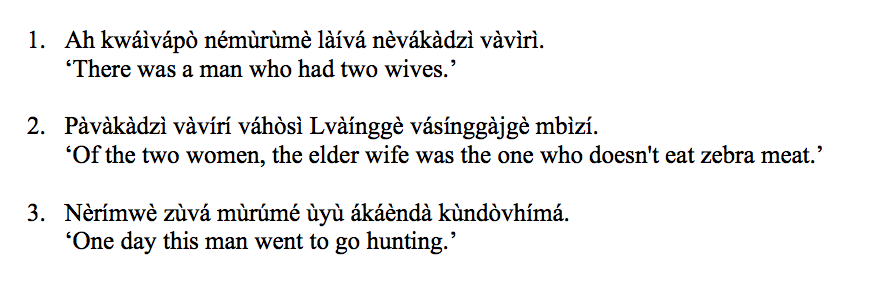 <audio controls> <source src="audio/TwoLanguage.wav" type="audio/wav"> </audio> --- # Transcript: Two languages w/ single speakers (full IGT) * Subject language * Translation language * Prosodic phrases * Morphemes * Morpheme glosses * Sentence level translations --- # Transcript: Two languages w/ single speakers (full IGT) <audio controls> <source src="audio/FullIGT.wav" type="audio/wav"> </audio> ((Guava, Besemah)) 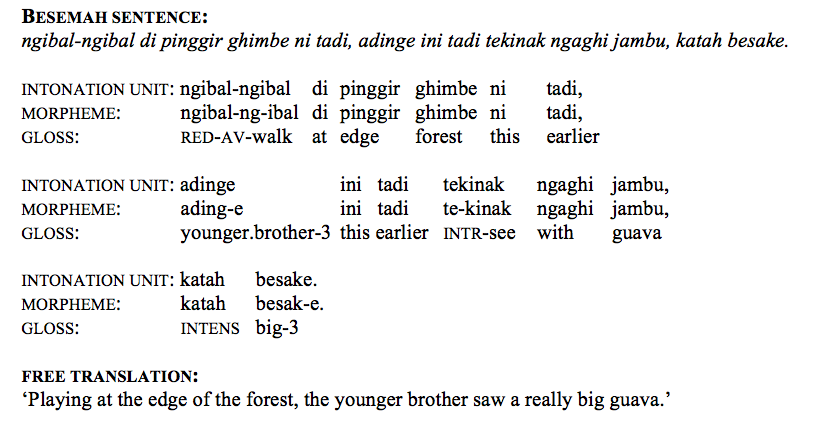 --- # ELAN's Tiers A **tier** is everything from a transcript that is the same kind of information. * everything that Jay-Z said in example 1. * everything that Jack said in example 2. * everything labeled Intonation Unit (or Gloss, etc.) in example 3. --- # Tiers With printed transcripts we are forced to put different parts of a single tier on different lines. | | | |--------|------| | Tier 1 | ... | | Tier 2 | ... | | Tier 3 | ... | | | | | Tier 1 | ... | | Tier 2 | ... | | Tier 3 | ... || --- # Tiers With a time-based tool like ELAN, we can conceive of each tier as existing... * as a **continuous** stream on a single line, * **contiguous** to the timeline of the media. 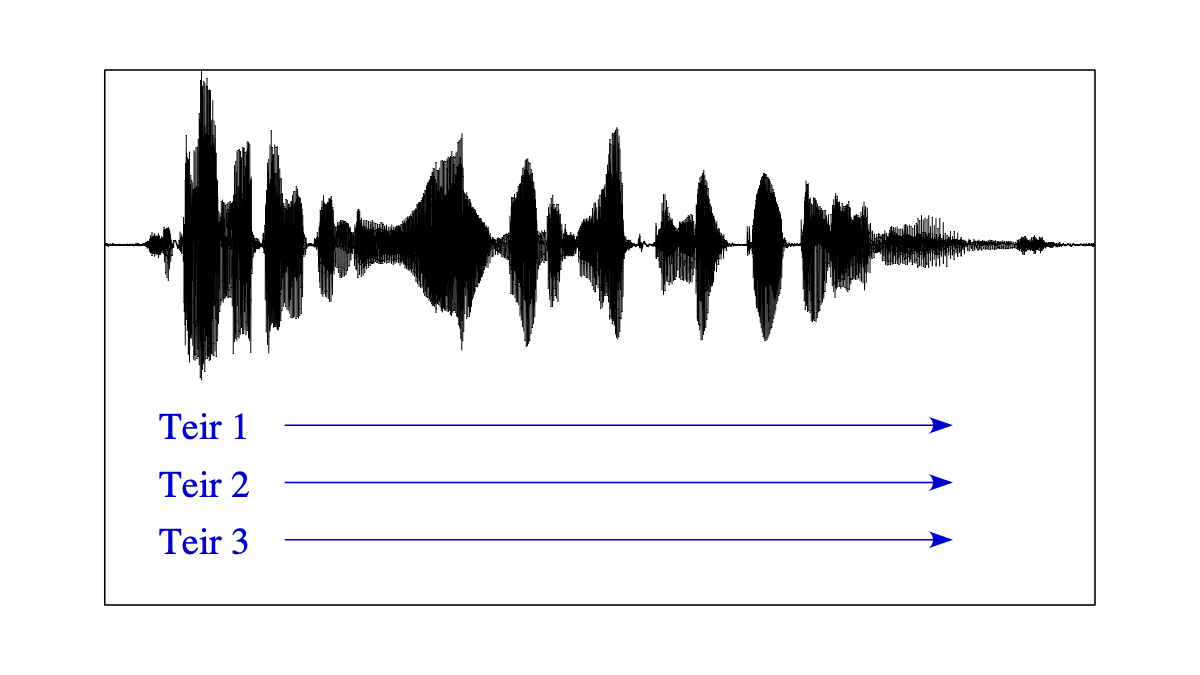 --- # Tiers With multiple continuous tiers, we can capture overlap between speakers.  --- # Tiers By conceiving of tiers as progressing forward through time, we can begin to establish some relationships between different tiers. * The parent-child relationship between tiers: | | | |---------------|-------------------------------------------------------------------------| | **Parents:** | tiers that control the behavior of other (child) tiers in some way. | | **Children:** | tiers that are associated with and dependent upon other (parent) tiers. | * This parent-child relationship is recursive, * a child of one tier could be the parent of another tier. * Certain changes to parent tiers will affect child tiers. --- # Tiers Top-level parent tiers are directly associated to the recording. * In many cases, this top-level tier is a direct representation of the media (but not always). * Every ELAN file **must** have at least one of these tiers. 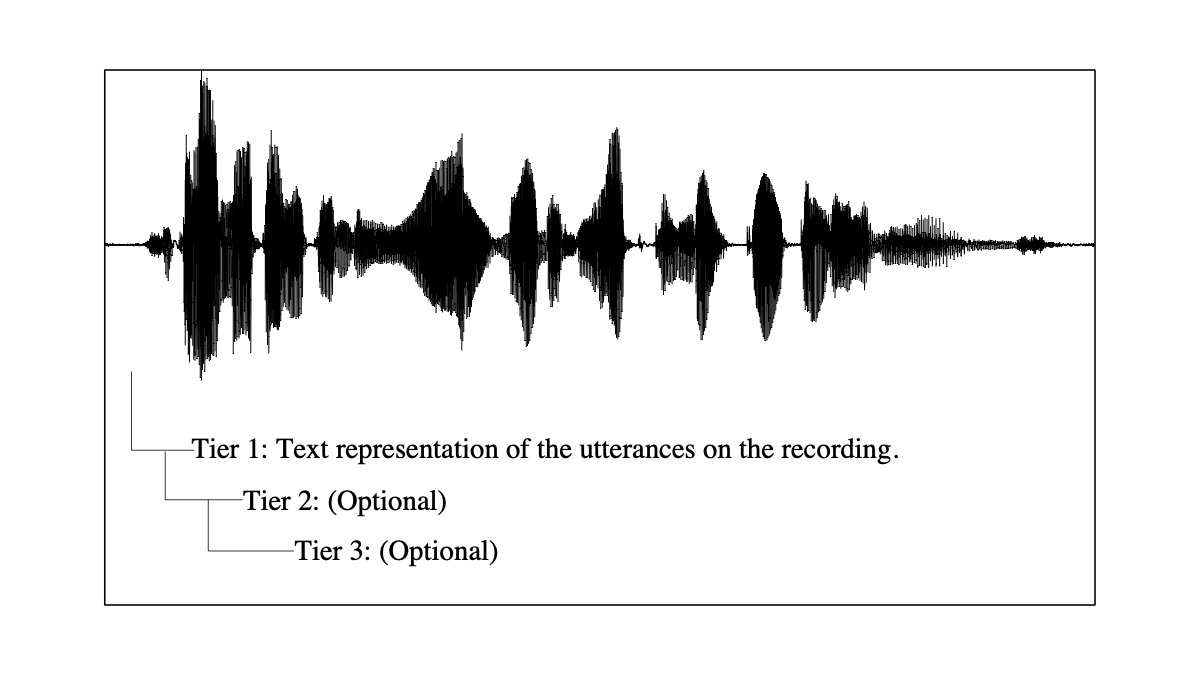 --- # Types The precise relationship between a parent & a child tier is defined in ELAN by **linguistic types**. * The linguistic type is determined by the kind of data a tier contains: * Utterances * Translations * Linguistic analysis * ... * The linguistic type usually determines a one-to-one or one-to-many relationship between the parent & child tier. * There are some restrictions on what linguistic types can be parent tiers. --- # Types (stereotypes) vs. Tiers 1. Every tier is assigned to a linguistic type 2. The linguistic type specifies the stereotypical constraints of that tier -- The **default** stereotypes is...  --- # Types (stereotypes) vs. Tiers 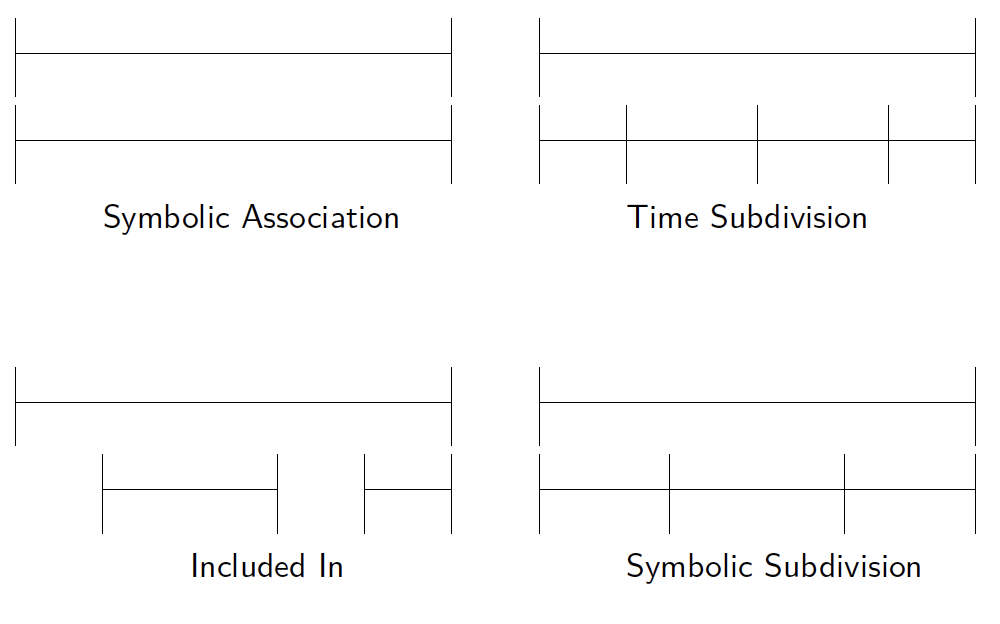 --- # Types Pop quiz on the Types in ELAN: * What **type** would you create for a *Free Translation* tier? * What **type** would you create for a *Word* tier? * How could you use the *Included In* **type**? * Could you use the *Time Subdivision* **type** for gestures? --- # Summary ELAN is ubiquitous in language documentation. * I recommend you learn it and use it in your work as much as you can. * Don't rely on just on me, there are lots of materials out there: * e.g., ELAN manual [http://www.lat-mpi.eu/tools/elan/](http://www.lat-mpi.eu/tools/elan/) --- # Let's take a brief tour...